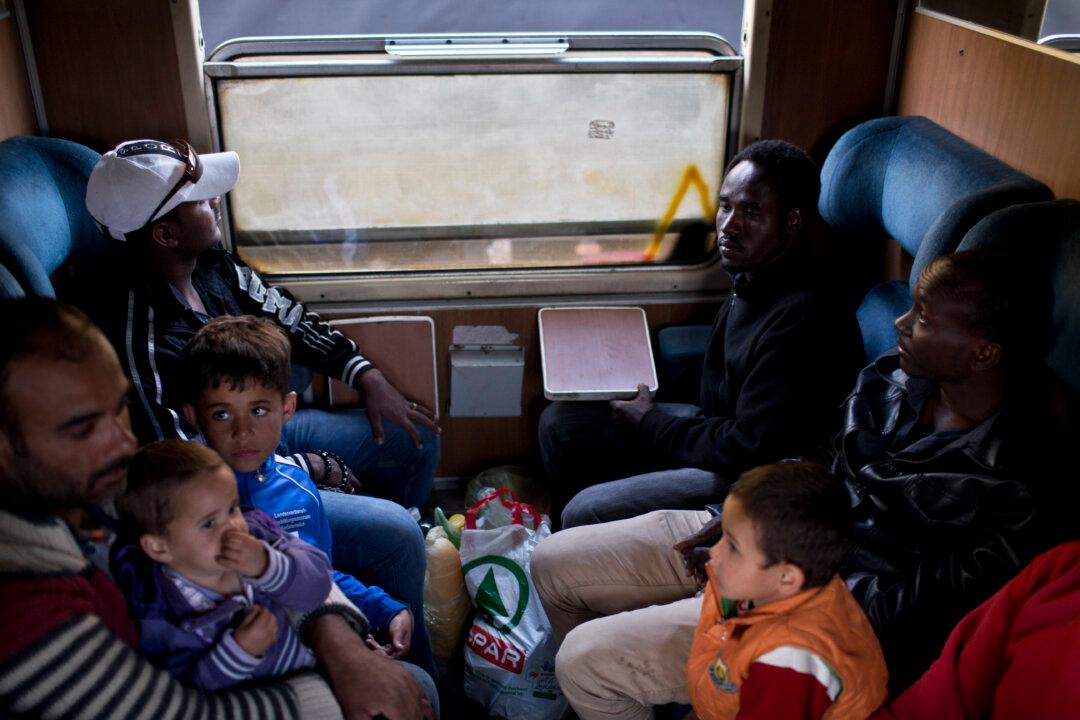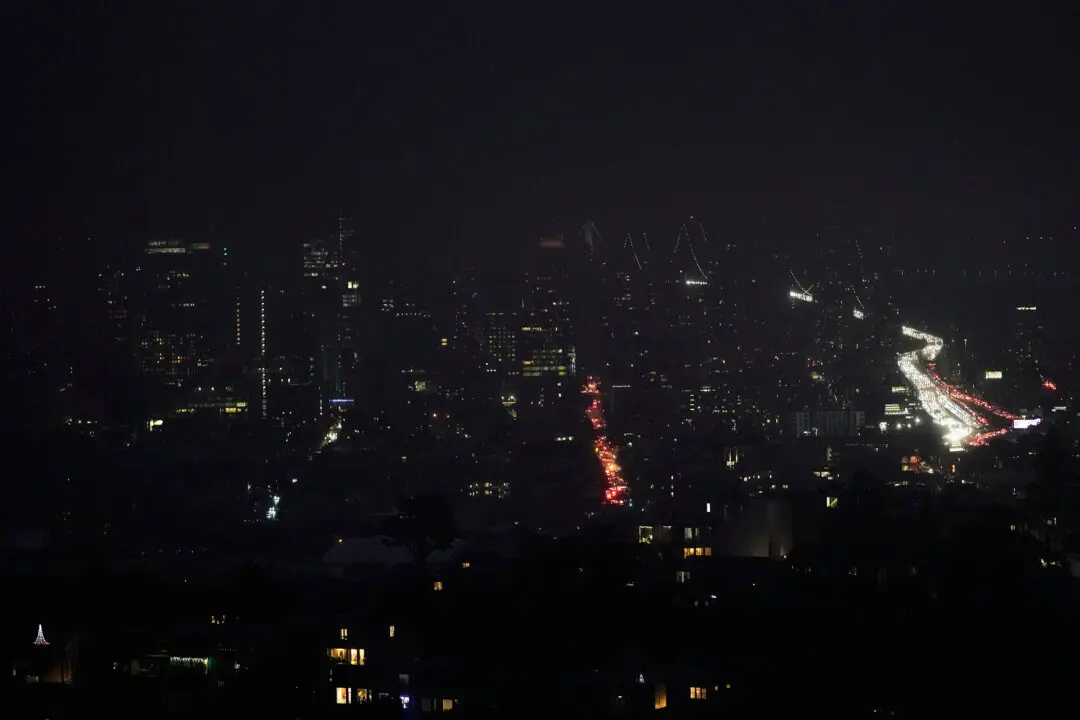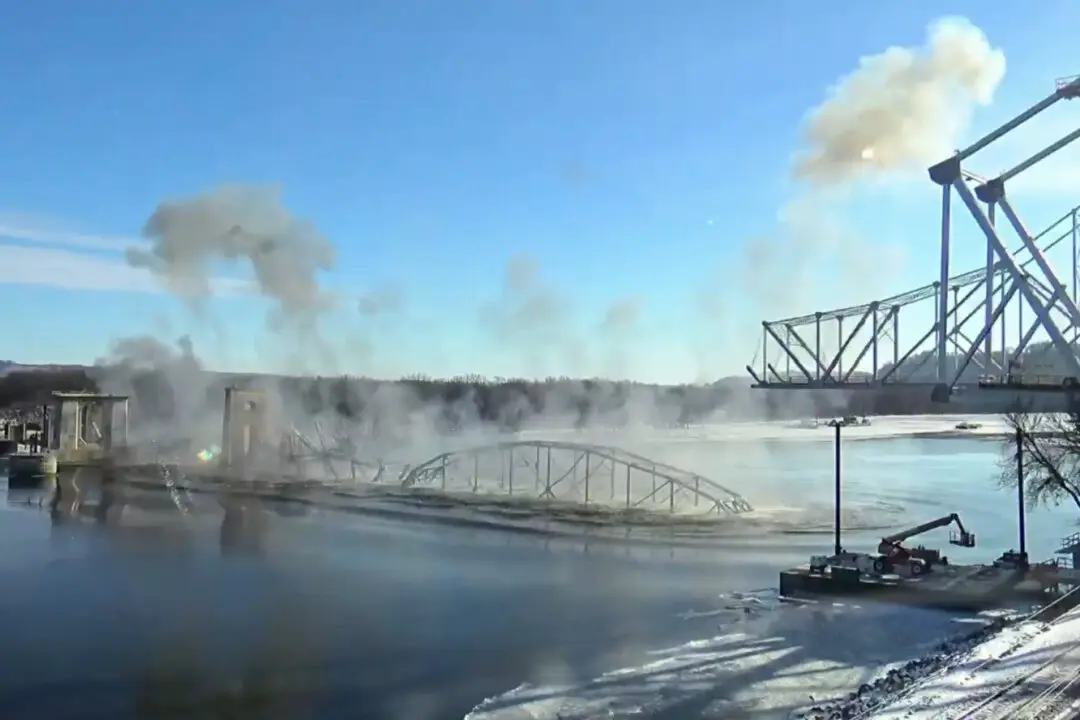PRESEVO, Serbia—Artist Omar Owad fled war-torn Syria with his wife and four young children and journeyed through three countries to reach Serbia, on the doorstep of the European Union and closer to his ultimate quest for a new life in Austria. No wall, he says, will stop him now.
The wall in question is merely theoretical at this point — a 4-meter (13-foot) high fence that Hungary is considering building on its 175-kilometer (109-mile) border with Serbia to stem a dramatic increase in the number of refugees and migrants from the Middle East and Africa. It would amount to a big barrier along what has become known as the Western Balkans route to the rich and peaceful EU.
On Wednesday, Hungary’s right-wing government is to receive a report about the cost, route and construction timetable for the razor-wire fence project, which has drawn scorn from Hungary’s EU partners, neighboring Serbia, and human rights groups.
The plan amounts to yet another government attempt to manage a tide of migration that has given headaches to policymakers from Britain to Belgrade and beyond.
For migrants like Owad, a 39-year-old sculptor, a wall would just be another hurdle to cross.
“You can’t stop people,” said Owad, one of hundreds of migrants from Syria, Afghanistan, Iraq and Africa who have flocked into the southern Serbian town of Presevo before heading farther north. He spoke shortly before he, his wife and four children aged 1 to 8 were to board a train toward the Hungarian border.
“If they build a wall, we will look for another line,” Owad said, gesturing to show refugees can dig underneath the fence.
Hungary says that so far this year, more than 53,000 people have requested asylum — 10,000 more than in all of 2014 — and up from just 2,150 in 2012. Once across the border, most migrants take advantage of EU open-border rules and head north to richer countries like Austria, Germany, Switzerland or the Nordic states.
The flow of migrants through the Balkans grabs fewer headlines than the death-defying crossings many migrants make across the Mediterranean. Still, about 40 percent of migrants who make the journey toward Europe use the Balkan route. Many take boats from Turkey or elsewhere to Greece, and then walk north from there.
On Monday, Serbia and Hungary agreed that Hungarian police will help patrol Serbia’s southern border with Macedonia to try to stem the flow of migrants. A team of 20 officers, equipped with four mobile thermal cameras, are to join their Serbian counterparts on the hilly stretch starting next week.
But Serbian authorities are furious about Hungary’s wall plan. They too decry the influx of migrants, saying that more than 22,000 asylum claims were filed in the first five months of this year — a six-fold increase from the same period last year — putting extra strain on Serbia’s struggling economy. Nearly half of those new asylum-seekers were registered in May alone. Serbia has appealed for international help to cope with the crisis.
Human Rights Watch says a wall isn’t the right way to deal with the influx. Alluding to the Cold War, when the Berlin Wall cast a long shadow over eastern Europe, the advocacy group called it “tragically hypocritical that Hungary, from where about 200,000 Hungarians were forced to flee in 1956 to obtain protection from Western countries, is currently closing its borders to those fleeing their countries for similar reasons.”
The group has also decried harassment of migrants in the form of assaults, threats, insults and extortion as they pass through Serbia. In April, 14 migrants were killed after being hit by a train in Macedonia as they walked along railway lines leading to Serbia.
Patrolling that border, Serbian police officer Miroslav Jovic said the influx has intensified in the past two months, with many women and children joining the flow. The border patrols use night-vision equipment to stop the migrants, but they simply return later on, Jovic said.
In nearby Presevo, hundreds of migrants lined up outside the local police station under a blazing sun to register as asylum seekers and gain permission to stay in Serbia for three days until they have to report to an asylum center. That’s just enough time to reach Hungary.
Some said a Hungarian wall would only increase smuggling.
“They can build a wall bigger than the Berlin Wall, but smuggling is never going to stop,” said Krano Tameer, a Syrian. “The smugglers will find a way.”
A 31-year-old bio-engineer from Syria, who gave his name only as Hassan, described Hungary’s intentions as “cruel.” He said a wall would make things “much harder” for the Syrian and other refugees, but once in Serbia, there is no way anyone would turn back.
“I won’t stop now, especially now,” said Hassan, who did not give his last name out of fear for the safety of family members he left behind. He reminisced about his good job, house and life in Syria that vanished after war broke out in 2011.
“I wouldn’t go if I didn’t have to,” he said. “I just want to live a good life.”





